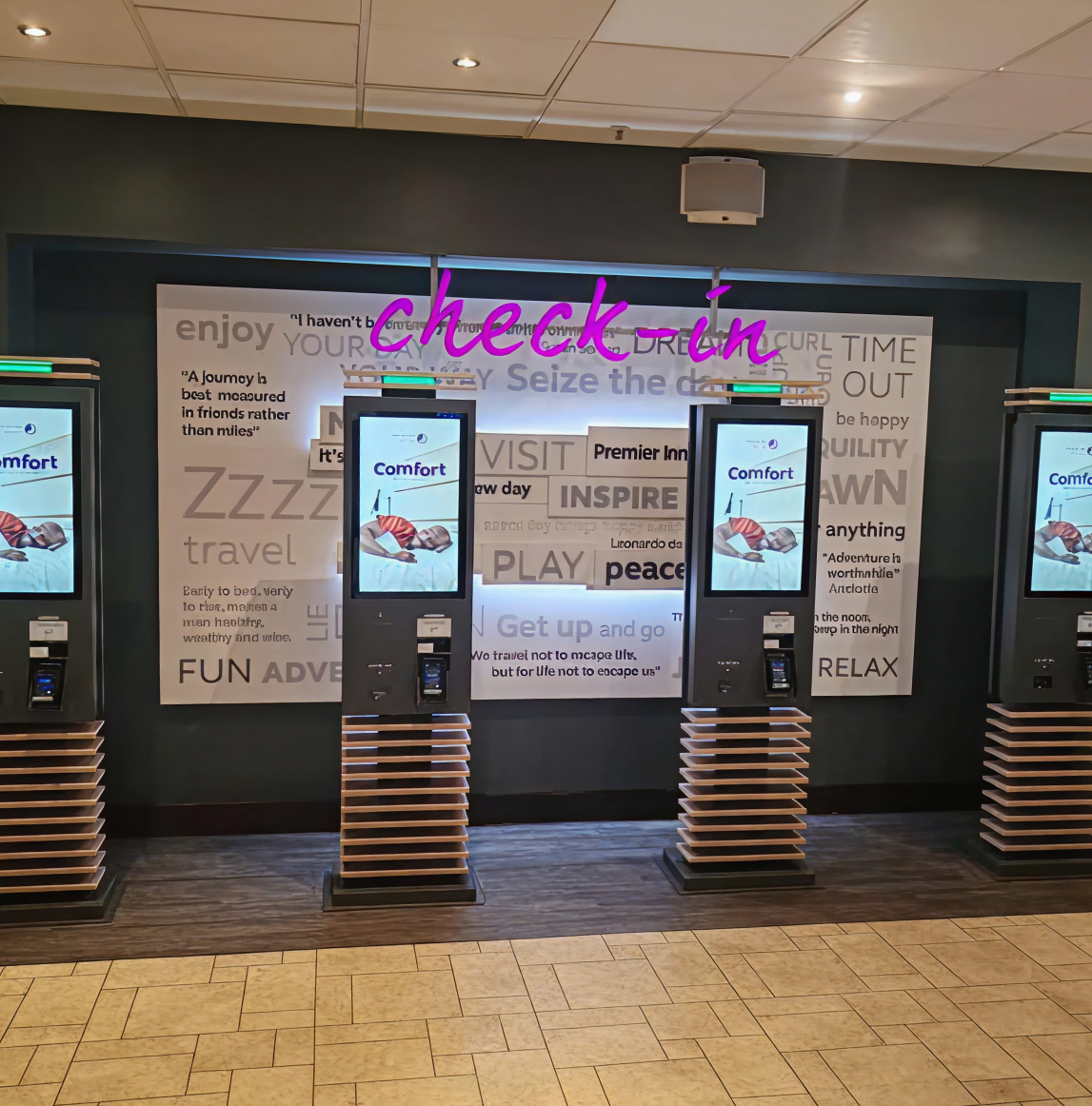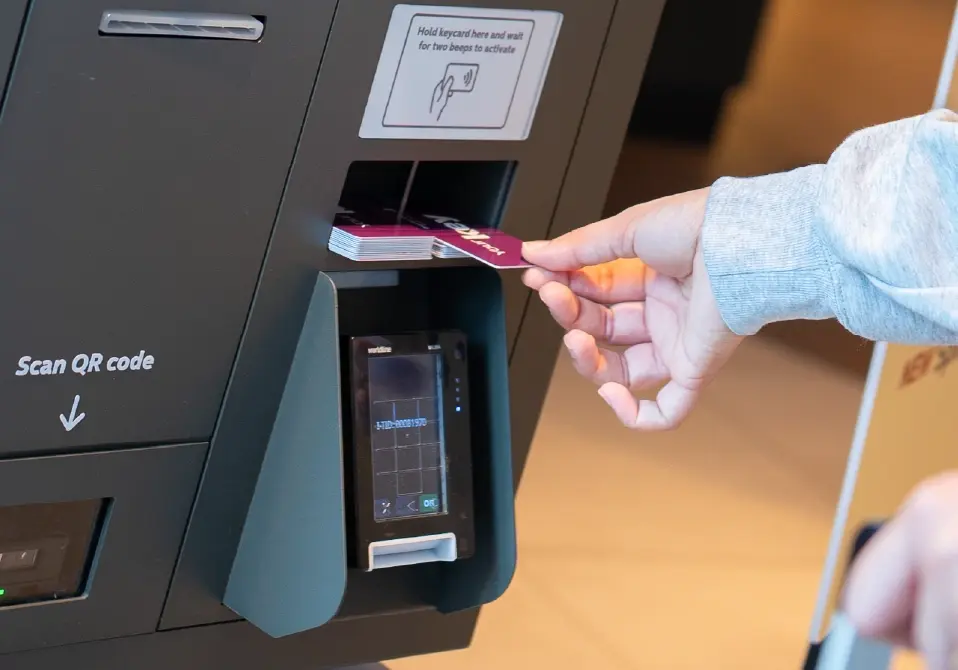
Improving the hotel guest experience with tech doesn’t need to be complicated
Guests expect convenience at every touch point during their stay at your hotel, and to meet these...
A guest’s experience with a hotel now extends far beyond the time they spend in their room.
Their encounter, and subsequent impression, with your hotel starts from the moment they make the booking and carries on for days after they check out.
This extended experience means hotels need to enhance all interactions they have with their guests, both within and outside the hotel itself.
One of several ways to achieve this is by blending the efficiency of technology with human-led interactions to create an experience that streamlines once mundane processes and preempts issues before guests even have a chance to be dissatisfied with them.
In this piece, we’ll be outlining seven hotel guest experience best practices that can achieve all of the above, and more.
The best check-in experiences are now far more aligned with the expectations of time-pressed travellers and those who expect a digital-first experience. Streamlining this first impression can be done by opening up the number of ways a guest can check in, be that on their mobile, at the front desk, or using self-check-in kiosks.
Integrated hotel kiosks carry out several different functions, for example, issuing keycards. These small functions add up to create a frictionless check-in process that allows staff to carry out more meaningful interactions with guests who have more complex needs.
Bottlenecks are reduced during busy periods, too, with guests now encouraged to check themselves in as opposed to waiting in a long queue until a member of the front desk is available.
The overall effect? A far more content guest base that retains a positive sentiment toward your hotel once they’ve arrived.
Kiosks also benefit hotels from a resource and marketing standpoint. As well as removing excessive labour costs during high seasons, the insights they gain from guest behaviour mean they can offer bespoke optional extras to them based on their preferences. For example, if a guest repeatedly books a late check-out, on their next visit, the kiosk can prompt them with this offer without them having to search for it.
Blending kiosks with in-person support creates a hybrid model that takes advantage of the technology without losing that human touch that makes hotels special. Evoke’s hotel kiosks help strike that balance, and our equipment can be tailored to suit your operational needs and brand aesthetic.
The last thing a hotel wants is for a positive check-in experience using a kiosk to be spoiled because guests don’t know where their room is. Poor signage can leave guests going in circles (literally, in some cases), creating an ill feeling about your hotel early on.
Digital wayfinding displays can help to combat this by giving guests more bespoke hotel orientation, helping them to find their exact room or places of interest without needing to rely on analogue signage.
Smart directional displays reduce foot traffic in reception areas by answering common location questions, such as “Where is the restaurant?” that would have once had to have been answered by a front-of-house team member, taking them away from more meaningful interactions.
Solutions such as digital signage can also help to make international customers feel more welcomed thanks to multilingual displays and universal icons that make it just as easy for them to navigate the hotel as it is for native speakers.
This sort of dynamic navigation is not just another of the hotel guest experience best practices. It also keeps staff focused on higher-priority tasks, which actually make an impact.
The modern hotel guest likes the efficiency that technology brings, but still wants that empathy and human interaction that only front-of-house staff can provide, which is why a mix of kiosk and concierge is ideal.
Think of it like this:
Self-service handles volume, but humans build relationships.

Effective melding of self-service and staff-led support begins by identifying the key areas across the guest experience where human interaction adds value.
Specific requests to mark special occasions, for example, are something that really only a human should handle. They have the emotional intelligence to understand the significance of this request to go above and beyond.
Once the areas are identified, staff can be reallocated to guest experience roles, knowing that kiosks are handling the important but routine admin work. Software such as Evoke’s Cloud can help with this identification.
With this in place, staff-led interactions feel more attentive and generous all of a sudden, because they’re not having to worry about long check-in lines.
These interactions can also be related to the kiosks themselves. Smart positioning near staff offers a safety net for less tech-savvy guests who might need assistance, something that can be supported by integrated training to help staff understand how to assist guests during these moments.
-1.jpg?width=1147&height=1162&name=CTA%201%20(1)-1.jpg)
Enjoy bespoke, on-brand self-check-in kiosks that provide greater efficiency without sacrificing human-led interactions.
Guests expect a certain level of personalisation, whether it's their fifth or 50th stay at your hotel. They are used to having every service available to them on their devices, all of which know their preferences and requirements, and this expectation extends out into the real world.
For hotels, using Customer Relationship Management (CRM) systems combined with kiosk telemetry data can add an extra layer to their service that is more personal and proactive.
During the self-check-in process, data from past usage can be used to offer personalised upsells that have a greater likelihood of being chosen, not because the offer is more relevant, but because the guest feels seen.
The true power of personalisation is not in the big acts, but the small gestures that happen without fanfare, which really transform the guest experience.
A complimentary bottle of champagne being sent up to the room to recognise an anniversary, a cot being put into a guest’s room, and a coffee order being remembered by a barista are just three examples of small gestures that leave lasting impressions, which can be achieved by utilising data.
The great thing about customisation is that the data needed is already there. It doesn’t necessarily require significant capital investment, just smart deployment of software combined with teams who know how to use the information.
Friction in customer experience is one of those frustrations which isn’t missed when it's not there, but the moment it arrives, it quickly diminishes guest satisfaction.
There are several key moments during a guest's stay where friction can arise if the proper systems aren’t in place. The use of in-room tablets, for example, lets guests request room extensions or services without needing to wait on the line for reception to answer.
Many hotels have integrated in-room tablets into their rooms so that guests have access to every on-site service. These in-room tablet experiences match the brand aesthetic without causing more friction and are synced with existing guest experience management systems so that requests can be anticipated and addressed.
Hotel check-in kiosks can play their part in further reducing guest frustration. Digital keycards and mobile room access can bypass the need to wait for a physical room key, whereas preloading preferences from past stays into the self-check-in process eliminates decision fatigue and encourages guests to upsell themselves.
Telemetry from smart appliances can help to remove friction before it's even arrived, as well. Monitoring the status of in-room appliances means issues can be fixed between stays by on-site estates teams without the guests ever having known how close friction was to disrupting their stay.
Back-end integrations between kiosks, in-room applications, and staff dashboards speed up the time between request made and request fulfilled. Not only does that reduce friction, but it leads to a customer who doesn’t just feel like another guest, but rather someone who is seen.

Value-added touchpoints help to maximise the revenue gained from every stay. These touchpoints can empower guests to sell themselves additional extras without your team having to do it.
Letting guests reserve a table at the restaurant or bar with in-room devices is a good example of tech driving additional revenue, as is using kiosks to present personalised offers to customers without the need for a pushy sales pitch.
Digital signage combined with QR codes can advertise additional hotel services, such as spa treatments, as guests walk through to their room when they’re likely more susceptible to these offers.
In fact, according to a Mood Media report, 68% of customers say that digital signage would make them more likely to buy an advertised product.
Advertising these experiences and providing a way to book there and then leaves the guest feeling that they treated themselves, to the benefit of your revenue.
These touchpoints don’t always have to be commercially minded, either. Displaying dynamic content such as weather reports or transport updates goes a long way to making guests feel like you’re thinking of them outside of the hotel’s four walls.
These commercial and informational touchpoints combine to create stickiness, i.e. moments that a guest can’t help but remember. It's these thoughtful extras that people will remember and share online.
We’ve seen how impactful tech can be on the customer experience in a hotel, but this can only be achieved by working with a partner who can deliver it.
Evoke has worked with brands like Subway and McDonald's to deliver high-impact kiosk solutions. While it's the hardware and software that transform the guest experience, it's our insights from thousands of prior installations that make the difference for our clients, helping them map a unique guest journey.
We don’t just install off-the-shelf products either, we specialise in Original Design Manufacture (ODM) kiosks, meaning our kiosks can be built completely bespoke to fit your brand and the environment they’re in. We’ll help define and prototype solutions that work at your locations. Whether you’re looking to roll out a brand-new kiosk estate or want to integrate new cloud software into legacy systems, Evoke’s end-to-end support can help.
The guest experience in 2025 is too important for your business to hinge on generic tech that doesn’t align with your brand's look and sound. You need a supplier who gets this and delivers confidence, as well as kiosks.
True hotel guest experiences are defined by seamless interactions on screen and in person, not by grand gestures alone.
The best practices outlined here will help you create an experience that the modern traveller will remember and recommend beyond their stay.

Learn more about our bespoke guest experience solutions and how our consultative approach offers more than just kiosks.

Guests expect convenience at every touch point during their stay at your hotel, and to meet these...

Today, hotel stays are built around several key stages and shaped by the interactions guests have,...

The way guests interact with hotels has undergone drastic changes in a relatively short period....